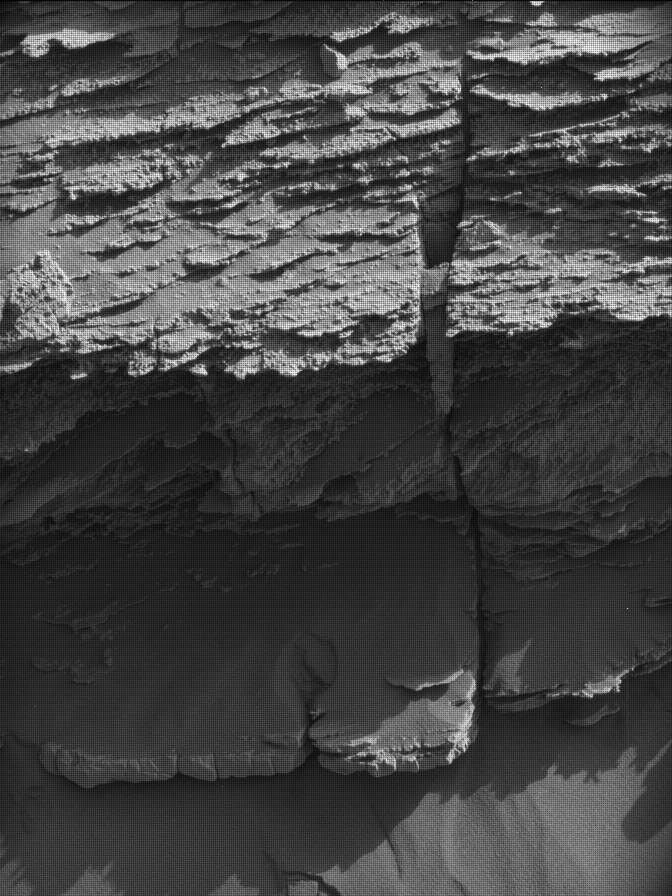Our APXS observation of the nodules in yesterday's plan didn't go exactly as planned: it was slightly misaligned with the nodule we were trying to analyze, so the measurement was mostly of the neighboring bedrock. That meant planning today started with a discussion of whether the chemistry from ChemCam was sufficient, or if we should spend another day and nail the APXS measurement as well. In the end we decided to try again and make sure we get all the data we want about the nodules before moving on.
The Sol 1278 plan starts with ChemCam analyses and Mastcam images of the targets "Tsarabis", "Lofdal", "Kunene", and "Nababis". Mastcam also has two mosaics to capture the contact between the "Murray" and "Stimson" formations and the transition from knobby nodule-rich bedrock to less nodule-rich bedrock. After that, MAHLI will collect images of the nodule targets "Sperrgebiet", "Maieberg", and "Konigstein" and APXS will try again to do an overnight measurement of the composition of Sperrgebiet. Since this is the second try, the rover planners have yesterday's data to work with and should be able to place the APXS more accurately. If all goes well, we should be able to wrap up at this location and drive away in the weekend plan!
by Ryan Anderson
-Ryan is a planetary scientist at the USGS Astrogeology Science Center and a member of the ChemCam team on MSL.
Dates of planned rover activities described in these reports are subject to change due to a variety of factors related to the martian environment, communication relays and rover status.
Written by Ryan Anderson, Planetary Geologist at USGS Astrogeology Science Center



































